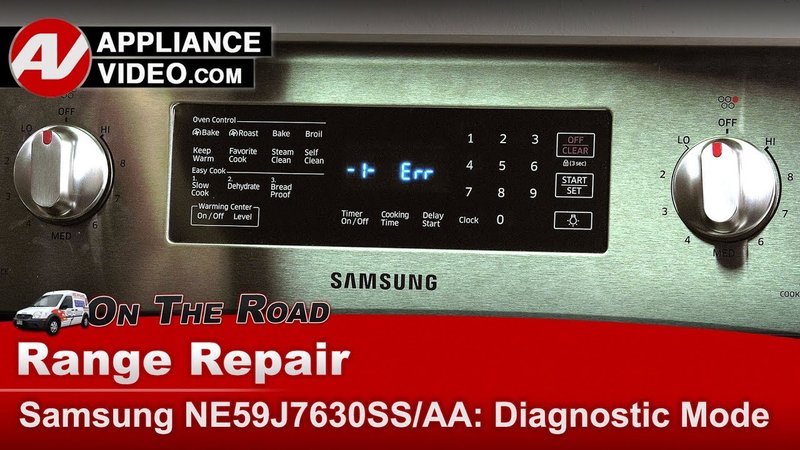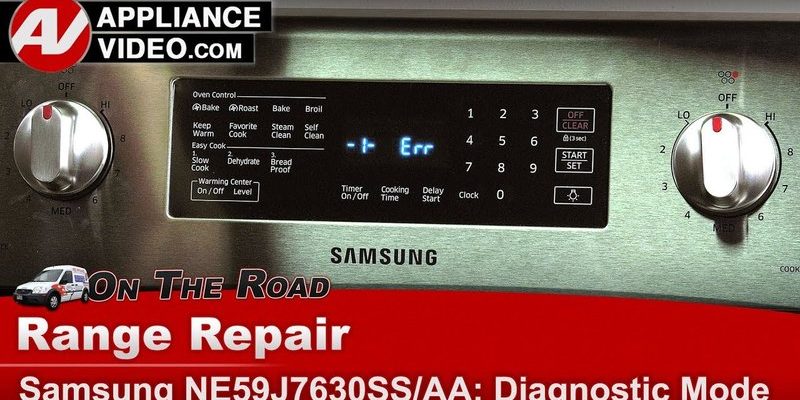
In simple terms, an error code E2 in Samsung ovens usually relates to temperature sensor issues. It’s like having a thermometer that doesn’t quite know what it’s measuring. This can affect the oven’s ability to maintain the correct temperature, potentially leading to undercooked meals or, in rare cases, overheating. Understanding these subtleties can save you from a lot of kitchen frustration and, importantly, ensure you’re cooking safely. So let’s take a closer look at what this error really means, how you can address it, and whether it’s safe to keep using your oven when it pops up.
Understanding Error Code E2
So, what exactly does error code E2 signify? Imagine you’re trying to bake a cake, and your oven has a mind of its own, not quite sure if it’s too hot or too cold. That’s the E2 error in a nutshell. This code usually indicates a problem with the oven’s temperature sensor or thermistor. This little component is responsible for reading the oven’s temperature and ensuring it stays consistent throughout your cooking process. When it malfunctions, it can throw a wrench in your culinary plans.
The error could mean a faulty connection, a sensor that’s out of calibration, or even a sensor that’s completely given up. Think of it like your body’s thermostat going haywire. If it’s off, your body can’t accurately gauge external temperatures, making it difficult to stay comfortable. The same concept applies here—if the sensor’s readings are off, your oven can’t maintain the right cooking temperature.
For most folks, this might sound like technical jargon. But here’s the deal: this issue can often be fixed without replacing your entire oven or range. Sometimes, it’s a matter of resetting the system, which can be as simple as powering off and on your device. However, in other cases, you might need to replace the faulty part. Understanding these nuances can help you decide whether to tackle the problem yourself or call in a professional.
Effects of Using an Appliance with Error Code E2
Using an oven that’s displaying an E2 error code is a bit like driving with a foggy windshield. You can probably get where you’re going, but you’re taking a risk. Cooking with inconsistent temperatures can lead to food that’s undercooked or overcooked—neither of which are ideal outcomes. More importantly, in certain instances, if the oven fails to regulate heat properly, there could be a safety risk, such as overheating.
Imagine leaving your house on a cold day without a proper winter coat. You’d likely be uncomfortable, right? Similarly, when your oven can’t regulate temperature correctly, cooking becomes something of a gamble. For some, the result might be burnt cookies, but for others, it could mean a safety hazard if the oven heats excessively.
If you notice that your oven is persistently showing an E2 error and your meals aren’t turning out right, it’s time to take action. Continued use without addressing the error could lead to further complications. In some cases, this might mean more extensive repairs or even reducing the lifespan of your oven. Being proactive can not only prevent a dinner disaster but also ensure your appliance remains in top working order.
Potential Solutions and Preventive Tips
So, what should you do when error code E2 rears its head? First, don’t panic. It’s important to approach this like any other household hiccup. A simple reset might be all your oven needs. Try turning off the oven completely, unplugging it from the power source, waiting a few minutes, and then plugging it back in. This can sometimes recalibrate the sensor and clear the error.
If that doesn’t do the trick, you might need to check the temperature sensor. This might sound a bit daunting, but think of it as checking the oil in your car—it’s a simple check-up. Ensure the sensor connections are secure and not damaged. If the problem persists, consulting the user manual or contacting a professional could be a wise next step.
To prevent future occurrences of the E2 error, regularly maintain your oven. Keep it clean, and periodically check for loose connections or unusual signs of wear and tear. Similar to how regular exercise keeps your body in shape, regular maintenance keeps your oven running smoothly. With these proactive steps, you can enjoy hassle-free cooking and keep those delicious meals coming out just right.
In conclusion, while the E2 error code isn’t the end of the world, it’s an indicator that something needs attention. By understanding what it means, exploring the effects of using your appliance in this state, and familiarizing yourself with potential solutions, you can handle this like a pro. Remember, the key is not to ignore the warning signs and to ensure your kitchen remains a safe place for all your culinary adventures.
